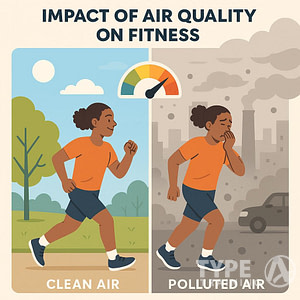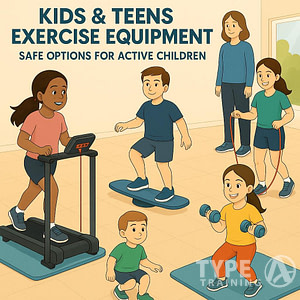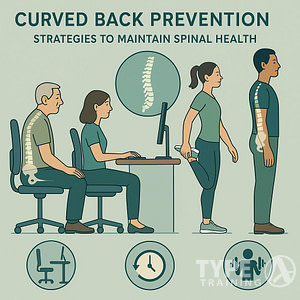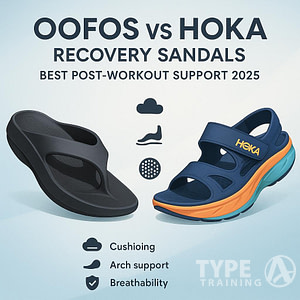McDonald’s Happy Meals have been a staple of fast food for decades. They captivate children with colorful packaging and enticing toys. While these meals may bring smiles to young faces, they also carry hidden concerns that parents should consider.
However, it’s important to understand the Dark Side of Happy Meals, which includes hidden health risks associated with fast food consumption.
The seemingly innocent combination of food and toys in Happy Meals can lead to unhealthy eating habits and potentially contribute to childhood obesity.
These factors contribute to the Dark Side of Happy Meals and highlight the need for better choices.
Popular posts:
Fast food chains have long targeted children through aggressive marketing tactics. They aim to create brand loyalty from an early age. Eric Schlosser’s book “Fast Food Nation” explains how these establishments seek to establish dependence in very young children. The psychological association between happiness and highly processed foods can have lasting impacts on a child’s relationship with food.
Understanding the Dark Side of Happy Meals can empower parents to make informed decisions for their children.
While McDonald’s has made efforts to improve the nutritional content of Happy Meals in recent years, concerns persist about the overall healthiness of these meals. The percentage of calories from fast food in children’s diets has increased in recent years, raising questions about the long-term effects on children’s health and well-being.
The Dark Side of Happy Meals is not just about food; it’s about setting lifelong eating habits.
Key Takeaways
- Happy Meals can contribute to unhealthy eating habits and childhood obesity
- Parents should educate their children about the Dark Side of Happy Meals.
- Fast food chains use aggressive marketing tactics to create brand loyalty in children
- The nutritional content of Happy Meals remains a concern despite recent improvements
Historical Evolution of Happy Meals
The evolution of Happy Meals reflects both marketing strategies and the Dark Side of Happy Meals.
The Happy Meal’s journey from concept to global phenomenon reshaped children’s fast food experiences. Its creation and evolution reflect changing attitudes towards marketing to kids and the role of toys in meal promotions.
This shift in perspective underscores the Dark Side of Happy Meals, emphasizing healthier alternatives.
Inception and McDonald’s Pioneering Concept
McDonald’s introduced the Happy Meal in 1979, revolutionizing fast food marketing to children. The concept bundled kid-sized portions with a toy, creating an irresistible package for young customers. You might be surprised to learn that McDonald’s wasn’t the first to introduce a children’s meal with a toy. Burger Chef’s Funmeal predated the Happy Meal by several years.
The Happy Meal quickly became a hit, with McDonald’s selling about 1 billion units annually. That’s roughly 2.7 million Happy Meals per day worldwide. The meal’s success led to partnerships with popular franchises, starting with a Star Trek: The Motion Picture tie-in in 1979.
Happy Meal Creators: Bob Bernstein and Dick Brams
Bob Bernstein and Dick Brams played crucial roles in developing the Happy Meal. Bernstein, an advertising executive, conceived the idea of a children’s meal in a box with activities. He drew inspiration from watching his son’s fascination with cereal boxes at breakfast.
Dick Brams, McDonald’s regional advertising manager in St. Louis, is often credited as the “father of the Happy Meal.” He championed the concept within the company. Together, Bernstein and Brams refined the idea, focusing on the meal’s packaging and toy component.
Their collaboration resulted in the iconic Happy Meal box design and the inclusion of small toys. This formula proved immensely successful, cementing the Happy Meal’s place in fast food history and children’s marketing strategies.
The Real Issue: How Happy Meals Draw Kids In
Moreover, the Dark Side of Happy Meals includes how children perceive fast food as a reward.
Happy Meals are designed to captivate children’s attention through more than just food. The real allure lies in the complete package McDonald’s offers:
Recognizing the Dark Side of Happy Meals is essential for fostering healthy eating habits.
• Colorful boxes with puzzles and games
• Toys that tie into popular movies or characters
• Play areas in some locations
These elements create an experience that goes beyond mere eating. Children associate McDonald’s with fun and excitement, not just burgers and fries.
The toys are particularly effective at bringing families through the doors repeatedly. Kids often beg their parents for Happy Meals specifically to collect the latest toy offerings. This clever marketing tactic can lead to frequent visits.
Consider these statistics:
These statistics reveal the implications of the Dark Side of Happy Meals on children’s health.
- 1.2 billion Happy Meals sold worldwide annually
- 220 million Happy Meals sold in the US in 2011
- 1/3 of US children eat fast food on any given day
By coupling toys with meals, McDonald’s has created a powerful draw for young customers. You might find your children asking to go there not for the food, but for the latest collectible figurine or miniature playset.
Nutritional Analysis
A deeper look into the Dark Side of Happy Meals highlights the need for better dietary choices.
Happy Meals have faced scrutiny for their nutritional content. Let’s examine the key components that raise concerns among health professionals and parents alike.
Content Breakdown: Sugar and Sodium Levels
Happy Meals often contain high levels of sugar and sodium. A typical meal can exceed 600 milligrams of sodium, which is a significant portion of a child’s daily recommended intake.
Sugar content varies depending on beverage choice. Selecting a soda can add 30-40 grams of sugar to the meal. This amount surpasses the American Heart Association’s recommendation for children’s daily sugar intake.
To reduce sugar intake, opt for water or milk instead of sugary drinks. For sodium reduction, choose apple slices over French fries as a side.
Comparing Nutritional Standards
Happy Meals have evolved to meet changing nutritional standards. Some cities have implemented regulations requiring meals with toys to meet specific criteria.
These standards often include:
- Less than 600 calories per meal
- Reduced sodium (under 640 mg)
- Inclusion of fruits and vegetables
McDonald’s has responded by offering healthier options like apple slices and low-fat milk. However, the core items like burgers and nuggets still contribute significantly to calorie and fat content.
You can improve the nutritional value by choosing grilled options over fried and opting for healthier sides and beverages.
Impact of Portion Sizes on Health
Understanding the Dark Side of Happy Meals can guide healthier decisions in meal selections.
Happy Meal portion sizes have a direct impact on children’s health. Smaller portions can help control calorie intake and reduce the risk of overeating.
The rise in childhood obesity has been partly attributed to increased fast food consumption. From 2009 to 2018, the percentage of calories children consumed from fast food rose from 10.6% to 14.4%.
Choosing smaller burger options or opting for fewer chicken nuggets can significantly reduce calorie intake. Pairing these with healthier sides like apple slices or a small salad further improves the meal’s nutritional profile.
Health Implications
Happy Meals can have significant impacts on children’s health and development. These effects range from immediate nutritional concerns to potential long-term consequences.
Parents should consider the Dark Side of Happy Meals when planning meals for their children.
Link to Childhood Obesity
Happy Meals contribute to increased calorie intake in children’s diets. The percentage of calories from fast food in children and adolescents rose from 10.6% to 14.4% between 2009 and 2018.
Frequent consumption of these meals can lead to weight gain and obesity. The combination of high-calorie main items like burgers or chicken nuggets with French fries and sugary drinks provides more energy than many children need.
You should be aware that the name “Happy Meal” itself is a psychological tactic to associate happiness with high-calorie foods. This can create unhealthy eating habits that persist into adulthood.
The awareness of the Dark Side of Happy Meals can foster healthier childhood experiences.
Children’s Meal and Long-Term Health Effects
The long-term health effects of regularly consuming Happy Meals can be concerning. These meals often lack essential nutrients while being high in saturated fats, sodium, and added sugars.
Choosing healthier options within the Happy Meal menu can make a difference. Opting for apple slices instead of fries or milk instead of soda can improve the nutritional profile.
However, consistent consumption may still lead to:
- Increased risk of type 2 diabetes
- Cardiovascular issues later in life
- Dental problems due to high sugar content
- Nutrient deficiencies from lack of varied diet
- Understanding the Dark Side of Happy Meals helps parents guide their children towards better nutrition.
Marketing Strategies
Fast food companies employ sophisticated tactics to attract young customers. These strategies go beyond just offering toys with meals, leveraging popular media and creating brand loyalty from an early age.
Branding Through Toys and Collectibles
The Dark Side of Happy Meals is a critical perspective in assessing marketing strategies.
Happy Meals revolutionized fast food marketing to children by including toys with meals. You’ll find that these toys often come in collectible series, encouraging repeat visits. Limited-time offerings create a sense of urgency.
Popular toy lines like Beanie Babies have been featured, tapping into existing crazes. The strategy aims to associate positive emotions with the brand through play. Children may pressure parents to visit frequently to complete their collections.
Use of Media Characters and Movie Franchises
You’ll notice fast food chains frequently partner with major entertainment franchises. Star Wars figurines or characters from the latest animated blockbuster often accompany meals.
This cross-promotion benefits both parties.
Familiar faces like Ronald McDonald serve as brand mascots, creating a friendly image for children. TV commercials and online ads feature these characters prominently.
The goal is to create positive associations between beloved characters and the fast food brand.
By leveraging popular media, companies aim to make their products more appealing and memorable to young audiences.
Product and Toy Safety
Happy Meals have faced scrutiny over the safety of their toys and food products. Concerns range from choking hazards to potential chemical exposures, impacting both regulations and consumer trust.
Regulations and Recalls
McDonald’s has encountered several toy safety issues with Happy Meal promotions.
In one case, a three-inch toy with a detachable antenna posed a choking risk, leading to reports of children choking or gagging. Such incidents have prompted stricter regulations and voluntary recalls.
You should be aware that toy safety standards have evolved. Manufacturers now conduct rigorous testing to ensure compliance with size, material, and durability requirements.
Despite these efforts, recalls still occur periodically.
Popular promotional toys like Beanie Babies and Star Wars figurines have generally maintained good safety records. However, you must remain vigilant, as even well-known brands can occasionally face safety concerns.
Consumer Perception and Trust
Your trust in Happy Meal safety directly impacts McDonald’s reputation. When safety issues arise, they can quickly erode consumer confidence.
Consumer perceptions can be influenced by the Dark Side of Happy Meals and their marketing tactics.
McDonald’s has responded to these challenges by implementing changes to their Happy Meal offerings.
You may have noticed that McDonald’s now focuses on more durable, single-piece toys to reduce choking hazards. They’ve also begun transitioning away from plastic toys, addressing environmental concerns alongside safety issues.
Awareness of the Dark Side of Happy Meals is crucial for maintaining consumer trust.
Consumer advocacy groups have played a significant role in shaping Happy Meal safety. Organizations have pressured McDonald’s to improve both toy and food safety standards, leading to ongoing improvements in product quality and transparency.
Consumer Choices and Alternatives
Happy Meals offer options beyond traditional fast food fare. You can make informed choices to balance nutrition and enjoyment for your children’s meals.
Making informed choices requires understanding the Dark Side of Happy Meals and their implications.
Healthy Options Within Happy Meals
McDonald’s added apple slices to Happy Meals in 2012, reducing the portion of French fries.
This change provides a fruit option alongside the main item. You can also choose milk instead of soft drinks, increasing calcium intake.
Some locations offer additional sides like yogurt or carrot sticks. When ordering, ask about available substitutions to customize the meal for your child’s preferences and dietary needs.
Growing Demand for Nutrient-Rich Choices
Parents increasingly seek healthier fast food options for their children. This trend has led to menu innovations across the industry.
You’ll find more whole grains, lean proteins, and vegetable sides available.
Industry trends are shaped by the Dark Side of Happy Meals, reflecting consumer demands.
Some restaurants now offer grilled chicken or fish as alternatives to fried options. Fresh fruit cups and salads appear on kids’ menus more frequently.
As a consumer, your choices influence future offerings. By selecting nutrient-rich options, you signal demand for healthier fare in children’s meals.
Unethical Marketing Practices by McDonald’s
The Dark Side of Happy Meals: Unpacking the Health Risks
McDonald’s has faced criticism for its marketing strategies, particularly those targeting children. The company’s tactics raise concerns about their impact on consumer choices and nutritional well-being.
Targeting Children with Advertising
McDonald’s employs various methods to attract young customers. Happy Meals with toys serve as a prime example of this strategy.
These meals combine food with collectible items, creating a powerful allure for children.
The company also uses playgrounds in restaurants and branded school events to build brand loyalty from an early age.
Celebrity endorsements and cartoon character tie-ins further enhance the appeal of McDonald’s products to kids.
You may notice McDonald’s ads during children’s TV programming or on platforms popular with younger audiences. This deliberate placement aims to create a strong association between the brand and childhood experiences.
Misleading Nutritional Claims
McDonald’s has been accused of downplaying the nutritional content of its menu items. While the company provides nutritional information, critics argue that it’s often presented in a way that minimizes negative aspects.
You might see terms like “all-natural” or “made with real ingredients” used in marketing materials. These phrases can give a healthier impression of products that may still be high in calories, fat, or sugar.
Some Happy Meals exceed recommended calorie intakes for children by significant margins. Yet, they’re often marketed as balanced meal options for kids.
Manipulative Advertising Techniques
The Dark Side of Happy Meals illustrates the challenges of ethical marketing in fast food.
McDonald’s employs psychological tactics in its advertising to influence consumer behavior.
Color psychology plays a significant role, with the red and yellow logo designed to stimulate appetite and create a sense of urgency.
You’ll often see idealized images of food that may not accurately represent the actual product. This practice, known as “food styling,” can create unrealistic expectations.
The company also uses scarcity marketing, promoting limited-time offers to drive immediate purchases.
This tactic can lead to impulsive buying decisions based on fear of missing out.
Influence on Consumer Choices
McDonald’s marketing strategies have a profound impact on consumer behavior. The ubiquity of their advertising creates a sense of familiarity and trust, even among those who don’t frequently eat there.
You may find yourself craving McDonald’s food after exposure to their ads, even if you’re aware of healthier alternatives.
This is partly due to the company’s emphasis on convenience and affordability in their messaging.
The brand’s focus on creating positive associations can override health concerns when making food choices.
Recognizing the Dark Side of Happy Meals is essential for making healthier food choices.
This is particularly problematic for children, who are more susceptible to marketing influences and may develop lifelong eating habits based on these early experiences.
Healthy Alternatives for Fast Food Meals
Fast food doesn’t have to mean unhealthy choices. Many popular chains now offer nutritious options that can satisfy cravings while providing better nutrition.
McDonald’s
At McDonald’s, you can make smarter choices for a healthier meal.
Consider ordering a grilled chicken sandwich instead of a burger. This option provides lean protein with fewer calories and less fat.
For sides, skip the fries and opt for apple slices. They add natural sweetness and fiber to your meal.
To drink, choose water or low-fat milk instead of sugary sodas.
If you’re in the mood for breakfast, try the Egg McMuffin. It’s a relatively balanced option with protein from the egg and Canadian bacon.
Remember to watch portion sizes. A regular hamburger can be a better choice than larger, multi-patty options.
Chick-fil-A
Chick-fil-A offers several healthier alternatives to their classic fried chicken sandwich.
The Grilled Chicken Sandwich provides lean protein without the extra calories from breading and frying.
For a lower-carb option, try the Grilled Chicken Nuggets. Pair them with a side salad for added vegetables and nutrients.
Instead of waffle fries, choose the Fruit Cup as your side. It’s a refreshing mix of fresh fruit that adds vitamins and fiber to your meal.
For breakfast, the Greek Yogurt Parfait with granola is a protein-rich choice that’s lower in calories than many other menu items.
Drink-wise, unsweetened iced tea or water are your best bets for staying hydrated without added sugars.
Subway
Subway can be a great choice for healthier fast food.
Start with a 6-inch whole grain bread for added fiber. Choose lean proteins like turkey, chicken, or ham.
Load up on veggies – they’re unlimited and add nutrients and flavor without many calories. Opt for mustard or vinegar as dressings instead of mayo or oil.
The Veggie Delite sandwich is one of the lowest-calorie options. If you’re watching carbs, any sandwich can be made into a salad.
Avoid high-calorie add-ons like cheese and bacon. These can quickly increase the fat and calorie content of your meal.
For sides, apple slices are a better choice than chips. Stick with water, unsweetened tea, or low-fat milk to drink.
Wendy’s
At Wendy’s, the Grilled Chicken Sandwich is a healthier alternative to burgers. It provides lean protein without excessive calories.
The small chili is a good source of protein and fiber. Pair it with a side salad for a filling, nutritious meal.
For a lighter option, try the Apple Pecan Chicken Salad. Ask for the dressing on the side to control how much you use.
Instead of fries, choose a baked potato. Top it with chili or broccoli for added nutrition, but go easy on high-calorie toppings like cheese and sour cream.
Opt for unsweetened iced tea or water as your beverage. If you must have a Frosty, choose the junior size to keep portions in check.
Starbucks
While known for coffee, Starbucks offers several healthier food options.
The Spinach, Feta & Egg White Wrap provides protein and vegetables in a convenient package.
For a snack, try the Protein Boxes. They offer balanced combinations of fruits, nuts, cheese, and eggs.
Oatmeal is a good breakfast choice.
It’s high in fiber and you can customize it with toppings like fresh fruit or nuts.
Education about the Dark Side of Happy Meals can empower healthier consumer choices.
When it comes to drinks, black coffee or unsweetened tea are your best bets.
If you prefer lattes, ask for non-fat milk and skip the flavored syrups to reduce sugar and calories.
Remember to check nutrition information before ordering. Some seemingly healthy options like smoothies can be high in sugar and calories.
Investigating the Dark Side of Happy Meals can lead to better nutrition literacy among children.
Industry Standards and Practices
New standards are a response to the Dark Side of Happy Meals and consumer demand for healthier options.
Fast food chains compete fiercely in the children’s meal market.
Companies constantly adapt their offerings to meet changing consumer preferences and health standards.
Competing Brands and Their Kid’s Meals
FunMeal, a popular child meal option, faces stiff competition from other fast food chains.
Many brands offer similar products, typically including a main dish, side, drink, and toy.
Key differences often lie in marketing strategies and toy partnerships.
Some chains collaborate with movie studios or toy manufacturers to create exclusive collectibles.
Nutritional content varies between brands.
Some emphasize healthier options like fruit slices or milk, while others stick to traditional fries and soda.
Pricing strategies differ too.
Some chains price Kid’s Meals lower to attract families, while others maintain higher prices for premium ingredients or toys.
Evolving Standards in Fast Food
Fast food chains are adapting to changing consumer demands and health concerns.
Many have reduced portion sizes in their child meals to address obesity concerns.
You’ll find more nutritious options on Kid’s Meal menus now.
Chains often offer apple slices, yogurt, or carrot sticks as alternatives to fries.
Beverage choices have expanded beyond soda.
Milk and juice are common options, with some chains even offering bottled water.
Toy offerings are evolving too.
Some chains now provide books or educational toys instead of plastic figurines.
Many companies have voluntarily adopted stricter advertising standards for child-targeted campaigns.
Understanding the Dark Side of Happy Meals is integral for advancing consumer advocacy.
You’ll see fewer commercials aimed directly at young children during certain TV hours.
Frequently Asked Questions
Happy Meals have sparked debate around their impact on children’s health, the environment, and consumer behavior. The following questions address key concerns about McDonald’s iconic kids’ meal and its evolution over time.
Critical discussions often center around the Dark Side of Happy Meals and their societal impact.
What are the potential negative impacts of Happy Meal toys on the environment?
Happy Meal toys contribute to plastic waste and pollution.
Many toys are made from non-recyclable materials and are quickly discarded.
Millions of these small plastic items end up in landfills or oceans each year, harming wildlife and ecosystems.
How does McDonald’s approach to marketing Happy Meals affect children’s eating habits?
McDonald’s marketing tactics often target children directly, potentially influencing their food preferences.
Colorful packaging and toy promotions can create strong associations between fast food and rewards, potentially leading to unhealthy eating habits in the long term.
Are there nutritional concerns associated with the food offered in Happy Meals?
Happy Meals have faced criticism for their nutritional content.
Traditional options often contain high levels of calories, sodium, and saturated fats.
While McDonald’s has introduced healthier alternatives like apple slices and milk, many nutritionists argue these meals still fall short of balanced nutrition for children.
What was the historical content of the original Happy Meal when it was first introduced?
The original concept of Happy Meals neglected the Dark Side of Happy Meals, focusing solely on fun.
The original Happy Meal debuted in 1979 and typically included a hamburger or cheeseburger, small fries, a small drink, and a toy.
The concept aimed to provide a complete meal for children in a fun, branded package.
At what developmental stage should parents consider introducing their children to Happy Meals?
Parents should consider the Dark Side of Happy Meals before introducing them to their children.
Child development experts generally recommend limiting fast food consumption for young children.
You might consider introducing Happy Meals as occasional treats for school-aged children who can understand the concept of moderation in their diet.
How has the Happy Meal box design evolved in response to health and marketing critiques?
The Happy Meal box design has undergone several changes over the years. Recent iterations feature more nutritional information and promote healthier options. Some designs now include interactive elements or educational content to address concerns about marketing to children.
Changes in the Happy Meal box design reflect awareness of the Dark Side of Happy Meals and marketing ethics.

















